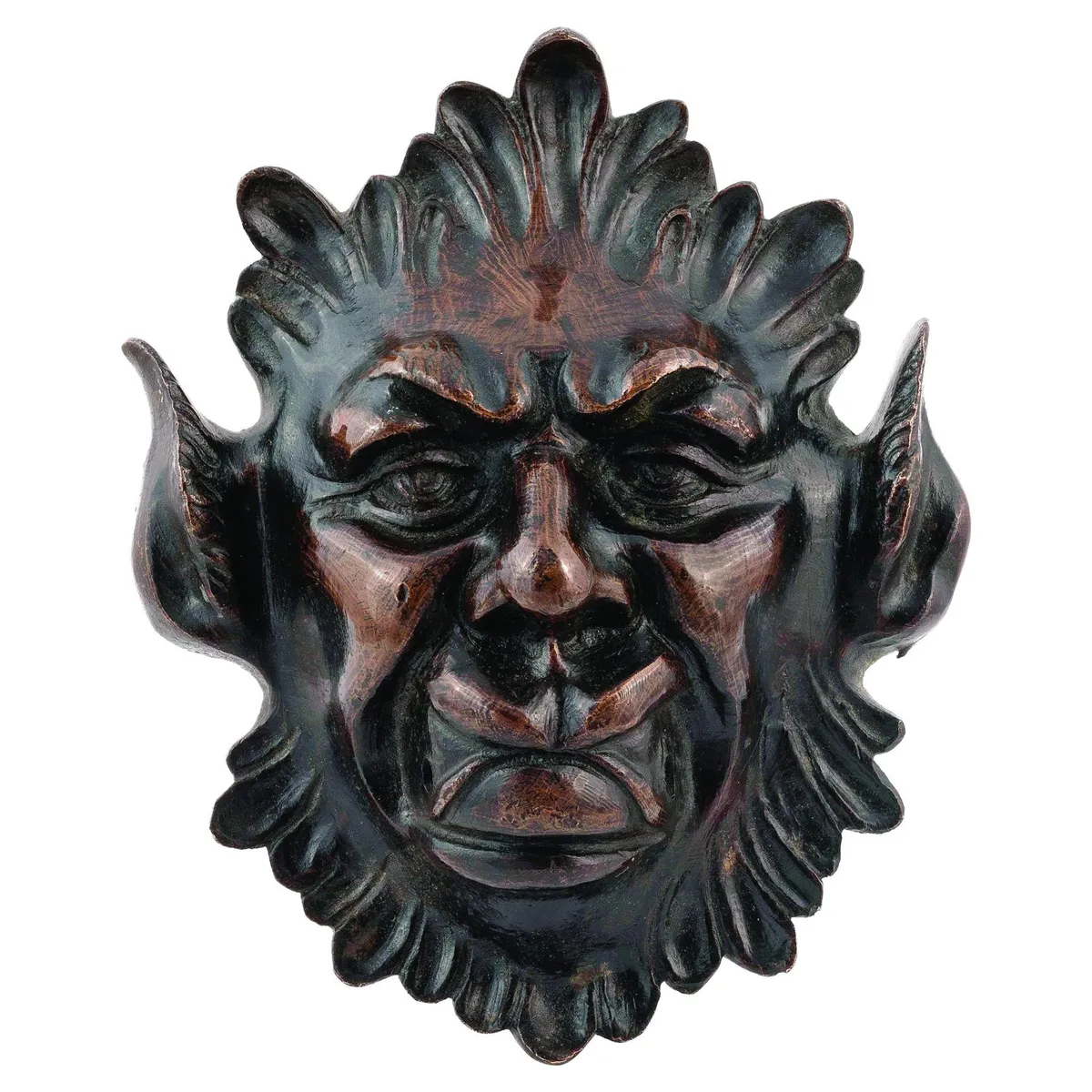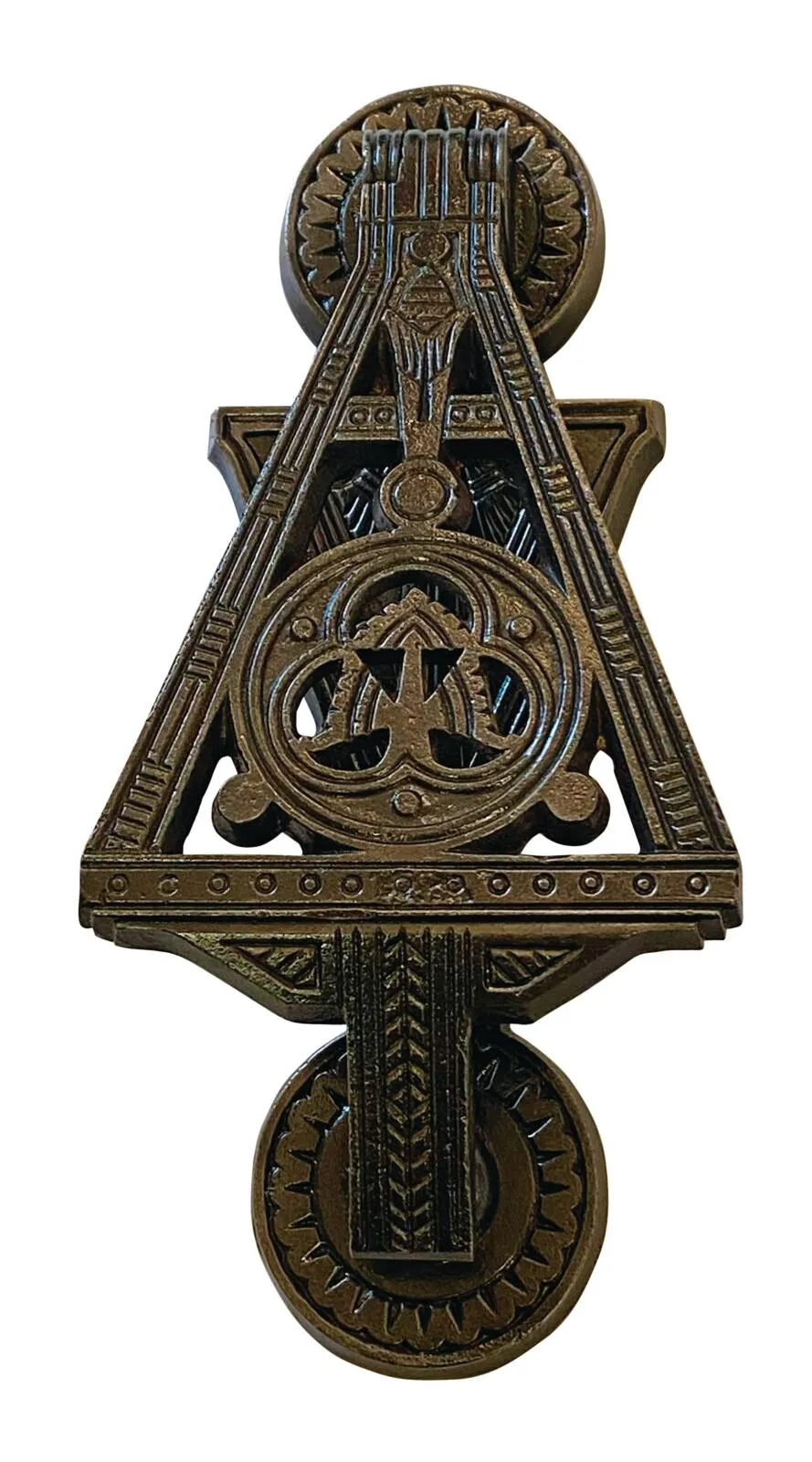Ancient Greek city states are thought to have had distinctly different approaches when it came to visitors announcing their arrival. While Spartans would advertise their presence at the door with a hearty shout, the refined Athenians came up with a more ‘sophisticated’ guest-alert system. A household slave would be chained to the door and assigned to answer it. It wasn’t uncommon for them to fall asleep, so a short iron bar was attached, enabling the visitor to rap on the door to wake them up. After it became apparent that this bar could be used as a weapon, the system evolved into a heavy wooden ring attached to the door – thought to be the earliest iteration of the modern door knocker.
The Romans adopted the device and its use spread throughout their empire. For some time, the majority of knockers remained plain, utilitarian tools but as blacksmiths’ skills evolved, they took on a greater range of shapes and styles. Knockers weren’t immune to the creative advancements of the 15th and 16th centuries either, and with the Renaissance came a growth in the intricacy of designs.

In Britain, door knockers were adorning most houses by the early Georgian period. As the 1800s wore on, their decorative potential had become apparent and it was fashionable to display a door knocker that exhibited a more complex or interesting style, helping to advertise the homeowner’s wealth, status or taste before guests had even crossed the threshold.
Despite the invention of the bell pull and, later, the electric doorbell, door knockers have remained widespread. Today, their popularity as an expression of our home style or personal taste is greater than ever, and antique examples remain in demand. If you own a period house that’s lost its original door furniture, finding an authentic knocker from the era in question can help create a fitting first impression.
Antiques dealer Anthony Outred finds that many of the customers who buy knockers from his eponymous shop are trying to find the perfect piece for their home, though it’s not always the case. ‘Clients purchase knockers generally with a particular period house in mind, although we do have a few collectors who are attracted by the huge creativity that went into producing such a vast and interesting variety of designs,’ he says. ‘Doctors’ knockers [which were distinctively shaped to identify doctors’ homes so they could be easily summoned] and lion mask knockers tend to be the most popular, and both were widely produced in the Georgian and Victorian periods.’

Many of us will be familiar with the lion as an icon of door knocker design – this king of beasts even famously adorns the front door of 10 Downing Street. The design epitomises strength, power and protection, and such symbolism is common in informing door knocker styles. Throughout history, their position on the threshold of a property means knockers have been charged with guarding or blessing a house; the ‘hand of Fatima’ design is one such sign of protection, while gargoyles have long featured on door furniture in a bid to ward off evil.
As with any decorative item, the choosing of a door knocker is an innately personal choice – some shapes and styles will speak to you while others might leave you cold. When you’re buying, you’ll likely be drawn to a particular design, but there are certain makers that are worth looking for too. ‘Some of the major 19th-century makers include William Tonks & Son, Archibald Kenrick and James Collins,’ says Anthony. Kenrick was especially prolific in the creation of enduring door furniture. His foundry was established in West Bromwich in 1791 and by the mid 1800s had started producing knockers, going on to create 200 or so designs, many of which can be found today, including pieces designed by Christopher Dresser.

Knockers by all these British foundries often reflect the popular decorative trends of the time, from Gothic Revival to Arts and Crafts, offering clues to the date of their conception and, value-wise, British-made Georgian and Victorian door knockers aren’t hugely expensive. Anthony cites between £200 and £800 for such pieces in wonderfully mint condition.
Other in-demand knockers, which tend to fetch a little more, are the highly ornate Italian creations of the Renaissance. ‘In my field, by far the most common and sought-after door knockers are Venetian examples from the 16th century,’ says Donald Johnston, International Head of the European Sculpture and Works of Art Department at Christie’s auction house. ‘Imagine a big, heavy palazzo door with a large bronze door knocker. These were usually quite decorative, often with nymphs, dolphins (fitting for a maritime culture!) and grotesque masks.’
Although such examples can be found for less than £1,000, they more commonly attract upwards of this figure, and at this end of the market, pieces would likely be designated by their owners as unique artworks, rather than devices to attach to the front door. Still more collectable are the older designs: ‘If a medieval example ever came on the market (the kind that you would see on the doors of a Romanesque cathedral, for instance) this would generate a huge amount of interest,’ asserts Donald. ‘These are typically centred by a lion mask with a ring in its mouth.’ A bronze Spanish Islamic knocker of this description sold for more than £1m at Christie’s in 2000, demonstrating the attraction and rarity of such pieces.
From their practical value to their symbolic and aesthetic qualities, antique door knockers have huge appeal. Best of all, they offer a really tangible connection to the past – in using them to announce our presence, it’s almost possible to sense the hundreds of hands that have performed the very same action over the centuries.
If you're not sure what colour to paint your period front door, consult our list of the best front door paint colours.
